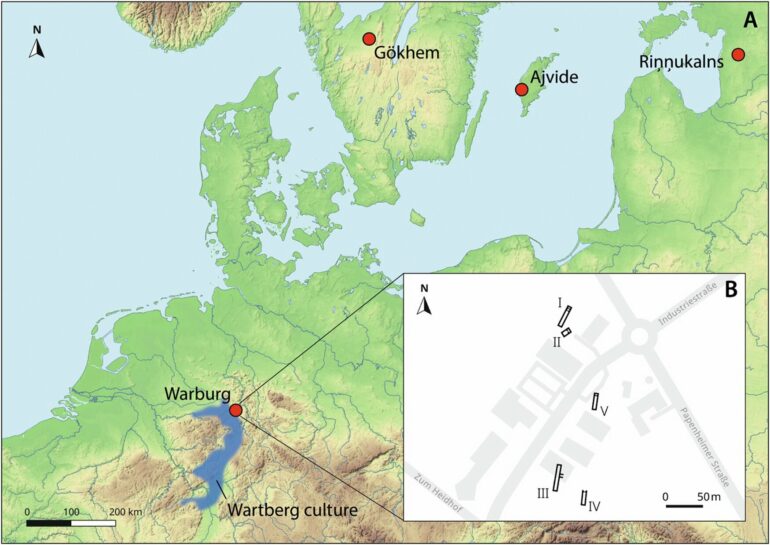Since the catastrophic pandemics of the Middle Ages, one disease has almost proverbially symbolized contagion and death: the plague. It is now known that the plague bacterium Yersinia pestis has been present in Central and Northern Europe for more than 5,000 years. However, it is still uncertain whether it also led to pandemics and mass deaths in its early forms.
Researchers from Kiel, Münster, Schleswig and Hamburg have now analyzed bones from late Neolithic farmers within the framework of the Collaborative Research Center 1266 “Scales of Transformation” at Kiel University (CAU).
“Our analyses indicate isolated infections rather than epidemics,” said Prof. Dr. Ben Krause-Kyora, a specialist in ancient DNA (aDNA) at the Institute of Clinical Molecular Biology at Kiel University and lead author of the study published in Communications Biology.
For the study, the team genetically analyzed the bones of 133 human individuals from late Neolithic megalithic graves near Warburg in North Rhine-Westphalia. The graves belong to the so-called Wartberg culture, which dates from around 5500 to 4800 years before the present.
The team identified the genome of the plague-causing bacterium, Yersinia pestis, in the bone samples of two individuals. The bacteria belonged to different strains. The infected individuals were not related, lived in different times, and were interred in separate megalithic tombs. This suggests that the infections were independent incidents, with no direct transmission between the two people.
“Overall, we see a high diversity of Yersinia pestis during the Neolithic period. This could indicate a low specialization of the bacterium at this early stage of its evolution. This may have facilitated its survival in different environments and animals,” says Ben Krause-Kyora.
This and the low number of plague cases among the 133 examined individuals show that the megalithic structures do not represent collective burials of victims of a massive plague outbreak. Whether the early forms of Yersinia pestis caused symptoms as severe as those in the Middle Ages is still unknown.
But how did Neolithic people become infected in the first place? Unlike the medieval strains of the bacterium, the Neolithic ones could not be spread by fleas.
Deforestation changed the landscapes of central and northern Europe in the Neolithic period. This attracted new rodent species from steppe areas to the east and south. They could have been natural reservoirs for Yersinia pestis.
“However, we don’t know how often people came into contact with these animals or their carcasses,” says Krause-Kyora. Previously published genomic data from the bone sample of a Neolithic dog from Sweden indicated a possible infection pathway. When the Kiel team re-analyzed the data, they found that the dog was also infected with the plague bacterium at the time of its death.
“This is the first record of Yersinia pestis in a Neolithic dog. Since dogs are often found in human settlements at that time, they could have played a role in individual infections,” says Krause-Kyora.
“Overall, the results of our study suggest that the plague pathogen was already frequently present in or near human settlements, but that it led to isolated infections rather than large-scale disease outbreaks,” summarizes Krause-Kyora.
“These results are also crucial for the ROOTS Cluster of Excellence, in which we are investigating how changes in climate, land use and diet may have influenced the spread of pathogens, especially Yersinia pestis.”
More information:
Julian Susat et al, Neolithic Yersinia pestis infections in humans and a dog, Communications Biology (2024). DOI: 10.1038/s42003-024-06676-7
Citation:
Neolithic bones reveal isolated Yersinia pestis infections, not pandemics (2024, September 6)



